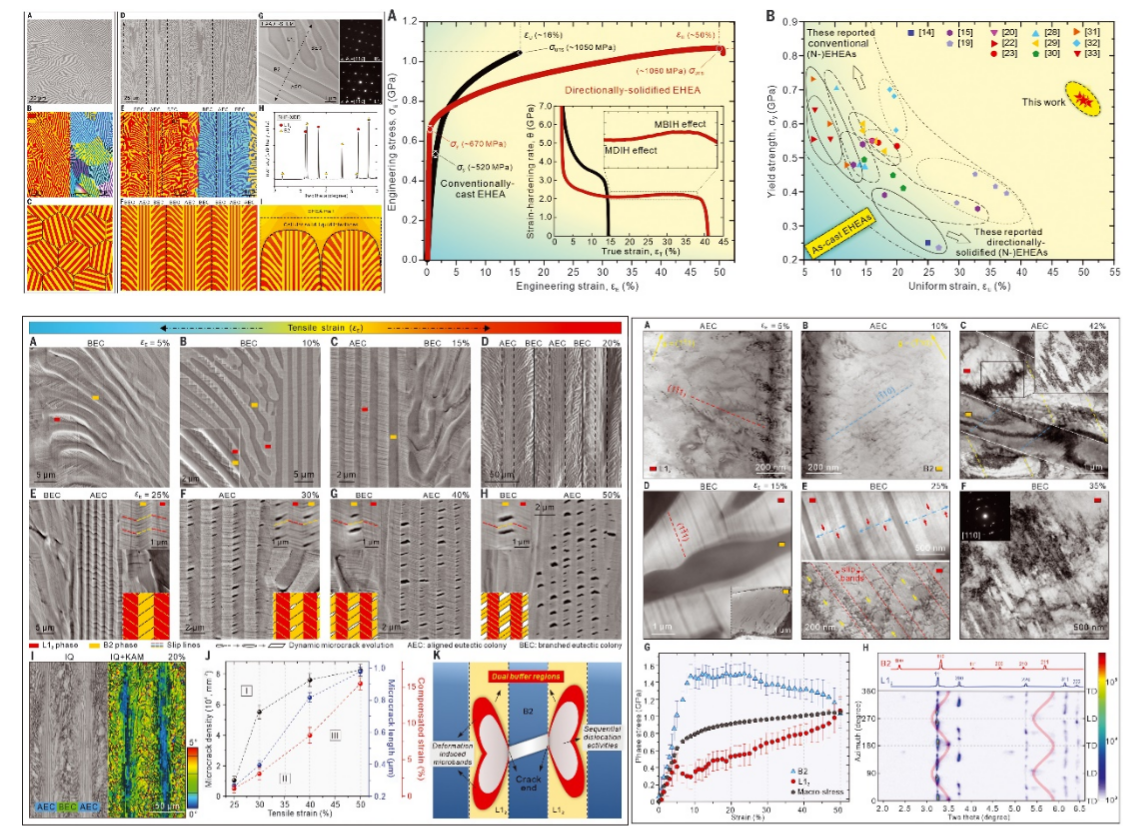News
Recently, Prof. Yandong Wang's team, in collaboration with Shanghai University, Max Planck Institute and other research institutions, used a unique solidification method to form a "bionic fishbone" microstructure in eutectic high entropy alloys, which can realize bionic layered multi-level microcrack buffering and obtain a superior plasticity in the eutectic high entropy alloy. The results were published in the prestigious journal of Science on August 20, 2021, under the title of “Hierarchical crack buffering triples ductility in eutectic herringbone high-entropy alloys”.

This work reports a new approach to design layered microstructures to develop crack-resistant, highly ductile eutectic high-entropy alloy (HEA). Owing to their specific fishbone hierarchical microstructure, the HEA demonstrated a significant increase in tensile plasticity and the strong crack buffering effect, which significantly suppresses potential catastrophic damages caused by microcracking over a large strain range. The HEA showed a high crack tolerance of within 25% tensile elongation, and an increase in the ductility by a factor of three relative to conventional cast HEAs without sacrificing the strength. Some multi-scale state-of-the-art characterization techniques, such as synchrotron-based high-energy X-ray diffraction, have been successfully used for revealing the stress transfer and damage micro-events. This layered fishbone microstructure design approach can also be implemented in other bulk materials consisting of soft and hard phases and has important practical implications for guiding performance improvement in a wider range of eutectic high-entropy/conventional alloys.